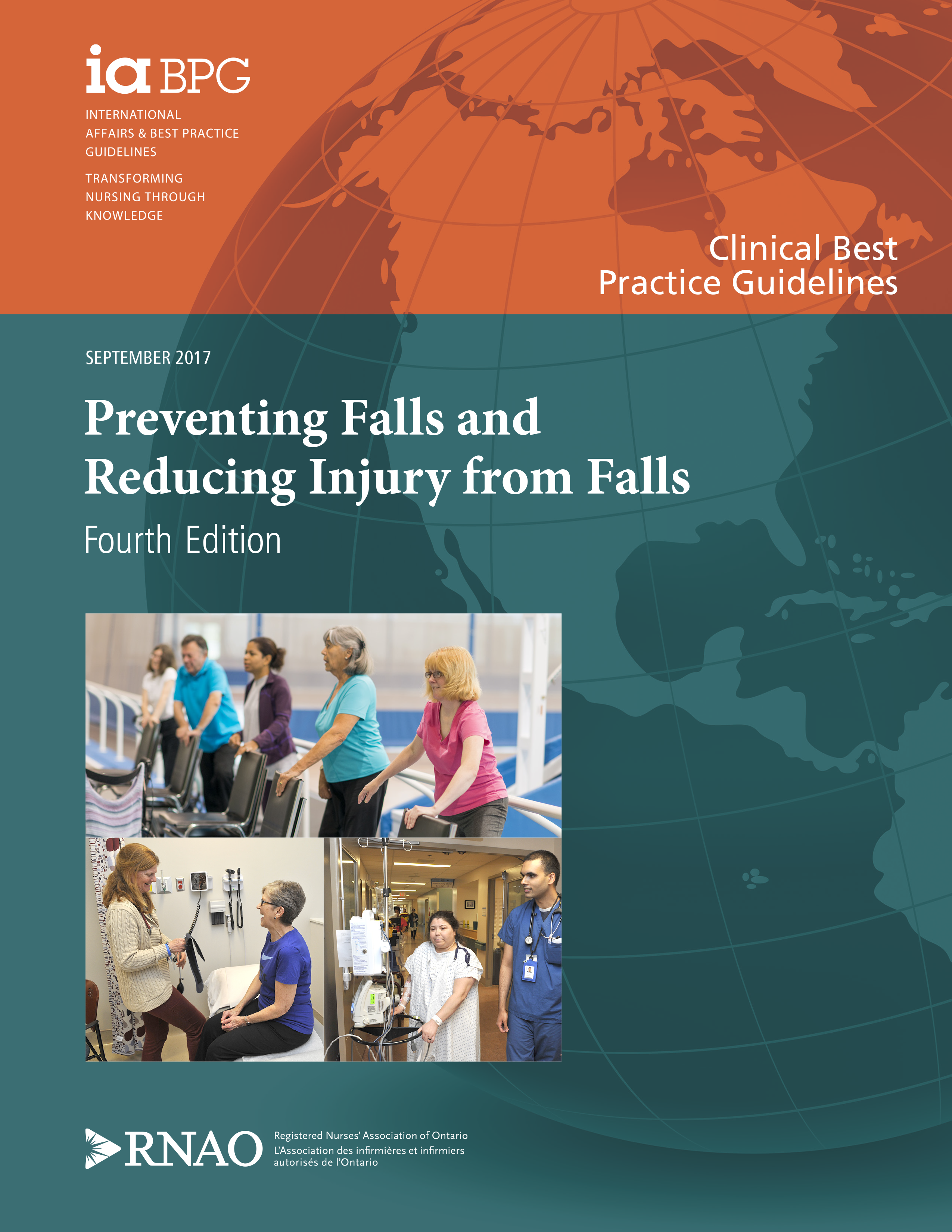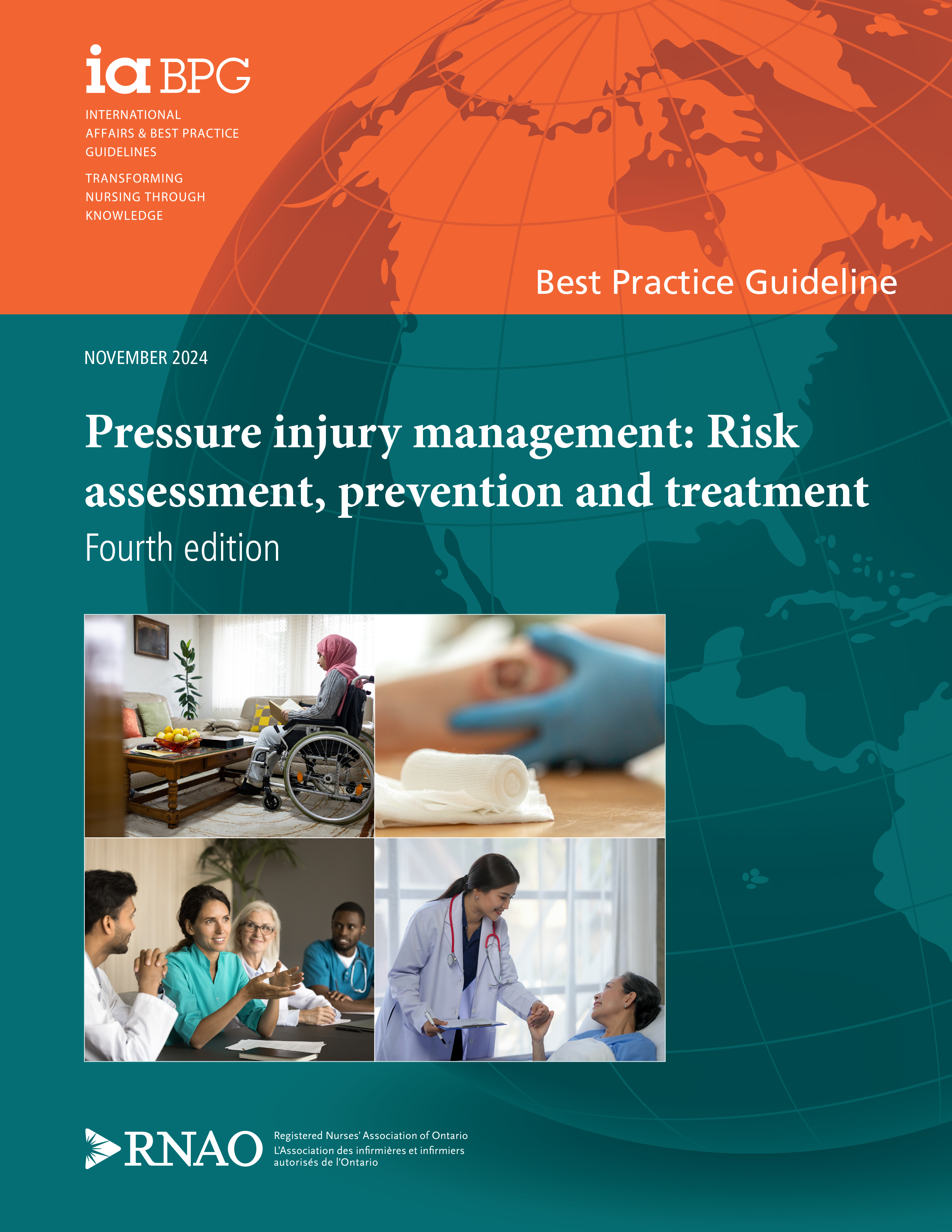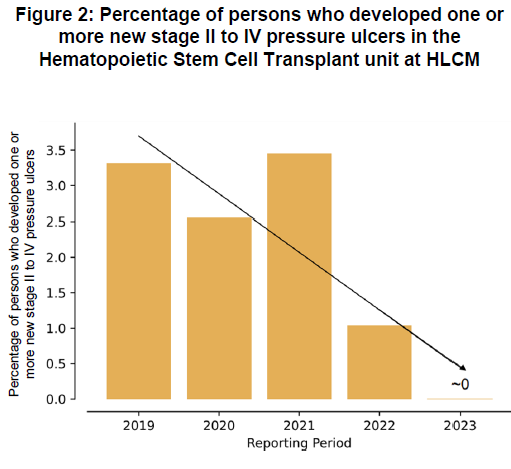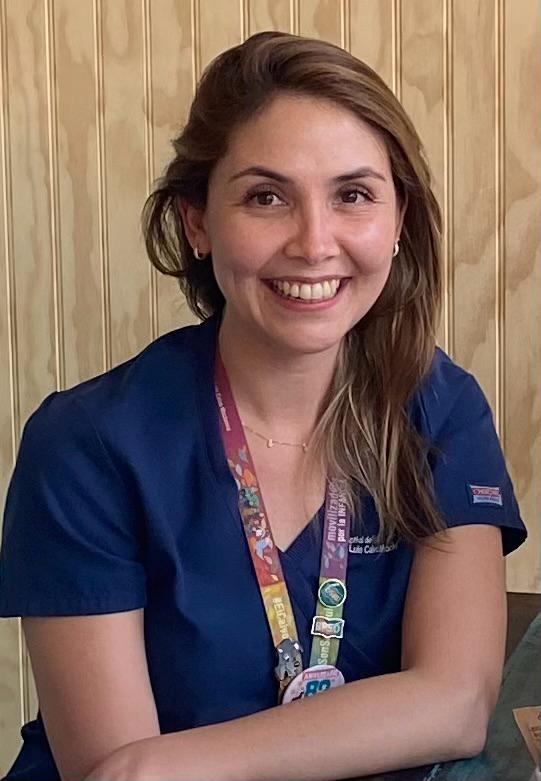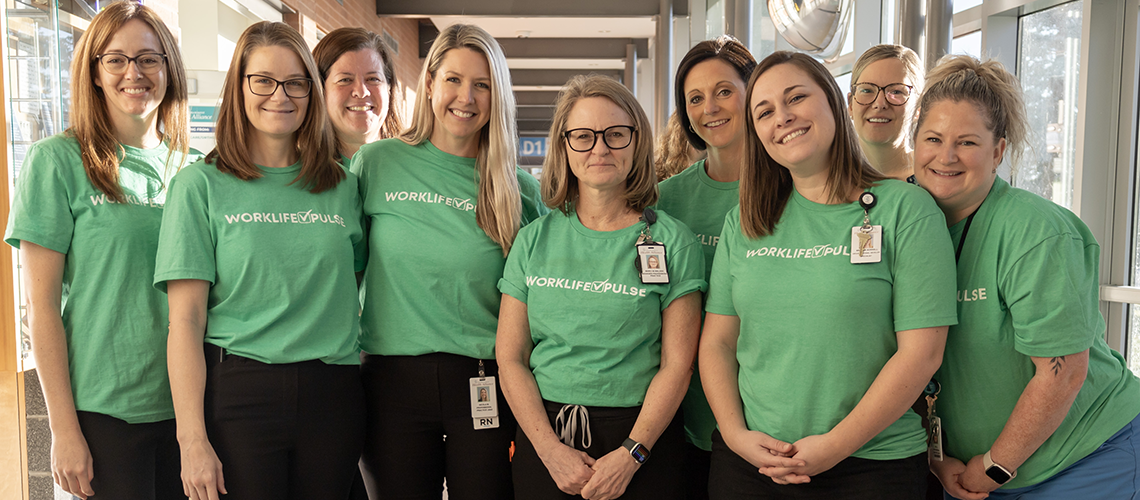
For almost two decades, southwestern Ontario’s Chatham-Kent Health Alliance (CKHA), an RNAO Best Practice Spotlight Organization® (BPSO®), has been implementing the Preventing Falls and Reducing Injury from Falls best practice guideline (BPG).
“We’ve covered every recommendation (in every edition since 2006),” boasts RN Marcia Martin-Walden, the community hospital’s manager of professional practice and BPSO lead. “We value the evidence and all the research RNAO has done on this. It takes us back to the basics, and I think that’s why it’s lasted so long.”
As one of the original four groundbreaking guidelines published by RNAO in 2002, the falls BPG is still among the most implemented across multiple sectors and beyond provincial borders. It is a fourth-edition BPG (released in 2017) with a fifth edition in development and expected for release in 2026.
So, why is this BPG still relevant 20+ years later?
Falls can’t always be prevented, but injuries from a fall are completely preventable with the right proactive approach and scanning in place to remove the risk of harm to patients.
“Falls are among the most common problems that must be constantly addressed by nurses,” says Dr. Doris Grinspun, RNAO CEO and founder of the BPG program. “There was – and still is – a dire need to address injuries from falls. Falls can’t always be prevented, but injuries from a fall are completely preventable with the right proactive approach and scanning in place to remove the risk of harm to patients. These efforts also reduce patient suffering and health-system costs.”
“We had the ability to build much of our electronic medical records (EMR) system the way we wanted it, so we’ve used the BPG and embedded it into our EMR,” Martin-Walden explains. “One thing that has always been part of our regular work is completing a falls assessment daily. As soon as you identify someone at high risk – or even at low risk – the EMR takes you through all the measures you should put in place to maintain patient safety.”
Since 2002, more than 1,500 organizations in Ontario, across Canada and around the world have implemented RNAO's falls BPG, and most are seeing positive results thanks to their mandatory reporting of data to Nursing Quality Indicators for Reporting and Evaluation® (NQuIRE®), the first international quality improvement initiative of its kind that measures structure, process and outcome indicators related to the association's BPGs.
CKHA, which serves a community that is mostly 65 years and older, still sees falls. “They’re going to continue to happen,” Martin-Walden admits, but the key is that the hospital promotes mobility in a safe way. Rather than a complete elimination of falls, CKHA is seeing “a reduced number of falls with harm. We’re seeing minor falls, like assisted falls to the ground or slipping off a chair,” she explains. “The harm has been reduced because of an awareness of constant safety and the proactive nature of the work now.”
As a BPSO, CKHA has partnered with RNAO to implement several other BPGs as well, reporting on each to NQuIRE on a regular basis. RNAO’s research unit director, Dr. Shanoja Naik, says the hospital has shown tremendous improvement between 2014 and 2024 on its falls rate (outcome/impact). “As time has gone by, the data is available at our fingertips on a daily basis,” says Martin-Walden “This is part of our hospital harm indicator and improvement is embedded in our strategic plan. We have our leaders at the top looking at this data right down to the frontline staff.”
This BPG – and all BPGs – have been able to stand the test of time for several reasons, according to RN Nafsin Nizum, associate director for the International Affairs and Best Practice Guidelines (IABPG) guideline development team.
“Internationally, the standards have developed and evolved over time and as an organization, RNAO has kept up with those standards,” she says of the changing landscape in guideline development for the collection and appraisal of evidence by the scientific community.
Key to this is Grading of Recommendations, Assessment, Development and Evaluation (GRADE). A methodology for guideline development that was first introduced in 2013, it requires a rigorous process to develop recommendations based on specific and strong evidence, Nizum explains. “Developing a BPG prior to GRADE involved a broader approach, which wasn't as streamlined and the recommendations and directions for practice were not as clear. With GRADE, the BPG expert panel picks the topic of interest and asks specific questions, which means the recommendations are specific as well.”
“One of the benefits of GRADE is that it’s given us a really transparent framework,” adds RN Lyndsay Howitt, an IABPG senior manager and guideline development methodologist. “If someone asks, “Why did you come up with that recommendation?” it’s clear how we arrived there with our panel of experts. It builds trust in how we create our guidelines.”
In the case of the falls BPG, revisions to the original recommendations were required in 2005, 2011 and 2017. When the fifth edition is released in 2026, it will reflect the most up-to-date evidence. “Guideline development has become a lengthier process,” Nizum suggests, and there are several variables to consider when determining if a BPG will be revised, retired or merged with another BPG.
Looking back to 2002, RNAO also released BPGs focused on continence and constipation (Promoting Continence Using Prompted Voiding and Prevention of Constipation in the Older Adult Population). Unlike the revised and new edition falls BPG released in 2017, the continence and constipation BPGs were combined to produce A Proactive Approach to Bladder and Bowel Management in Adults (published in 2020).
“These two BPGs were merged into one, mostly because the topics are very intertwined in terms of physiology and the sector they apply to (older adults in long-term care). The people who were involved in one topic had a lot of knowledge in the other topic. It just made more sense to combine them,” Nizum explains.
Retiring a BPG is far less common, but it does happen, she adds. Guidelines focused on methadone treatment, hypertension, subcutaneous insulin and chronic kidney disease have been retired over the years. Their recommendations have either been rolled into related BPGs or RNAO has recommended other high-quality, non-RNAO BPGs as an alternative.
The last of the original four BPGs introduced in 2002 is the Risk Assessment, Prevention and Treatment of Pressure Injuries BPG. Like the falls guideline, this is still one of the most implemented BPGs across sectors and countries. In November 2024, RNAO released the fourth edition, which replaces previous editions from 2005, 2011 and 2016.
“Pressure injuries are among the most common ailments or complications that nurses are key to preventing,” says Grinspun. “When you look at nurse sensitive indicators, even back in 2002, these were at the top of the list. Pressure injuries should never happen. And if you look at our BPSOs that are doing well, level III and IV pressure injuries no longer exist thanks to the implementation of our BPG.”
In May 2024, RNAO published an Evidence Booster that illustrates the impact this BPG is having for one BPSO in Chile. Hospital de Niños Dr. Luis Calvo Mackenna is a large public pediatric teaching hospital in the country’s capital of Santiago. It began implementing the pressure injuries BPG in 2018. Between 2019 and 2023, the hospital was able to bring its percentage of people developing one or more new stage II to IV pressure injuries to zero (from 3.3 per cent).
The hospital, one of the first in Chile to partner with RNAO as a BPSO, was one of six facilities that was directed by the country’s ministry of health (which acts as a BPSO Host and manages the work of BPSOs across the country) to implement the pressure injuries BPG due to its expected impact on quality, safe patient care, according to Paula Villablanca, nurse coordinator and BPSO lead.
And the ministry is pleased with the results.
By standardizing practices across the hospital to conform to the BPG, individuals identified as being at medium- to high-risk of developing pressure injuries were repositioned every two hours and provided with a surface for pressure management, in addition to implementing specific measures based on risk factors such as humidity, friction, immobility and presence of medical devices. Pressure injury risk assessments are mandatory upon admission, and re-evaluations are conducted daily and as needed.
“Pressure injuries continue to be one of the main adverse events in hospitalized people. And we know these are preventable with the different measures and strategies that we find in the BPG,” Villablanca says. In addition to the elimination of new stage II to IV pressure injuries, the hospital has seen a 71 per cent increase in the percentage of persons identified as “at risk.”
These results speak to Grinspun’s goal when she launched the BPG program 25 years ago. “I was concerned at that time that nursing care was not based on robust evidence, and that there was a perception that nursing care was only about compassion,” she says. “I wanted to advance the clinical knowledge and chose these guidelines (falls and pressure injuries) because evidence-based nursing care is key to both of these avoidable events.”
CKHA in southwestern Ontario and Hospital de Niños Dr. Luis Calvo Mackenna in Chile are just two examples of why these BPGs are still implemented so widely today. “These BPGs have made a huge difference to patients and clients, and to health systems,” Grinspun says proudly.
